‘A’ is for Advocacy – Why We Must All Become Activist Educators
By Julie Holderbaum, Minerva EA/OEA

During the past few months, Ohio’s teachers have found ways to creatively teach every content area while being separated physically from our students. It hasn’t been easy.
However, our struggles as teachers learning new technology and methods of teaching pale in comparison to the challenges of our students trying to learn from home. Few of them have a quiet workspace with a computer and ample time to engage with school assignments. Even in the best case scenarios, students are distracted by Netflix and TikTok, phones and video games. Most of my students face even greater challenges. They are taking care of younger siblings while their parents work, or they are working more hours at their own jobs to help with family expenses. Some of my students suffer from depression and anxiety, and now they are dealing with the world turned upside down. Sadly, in the worst cases, students are trapped at home with physically or mentally abusive family members and no escape to the safety of school.
Coupled with the fact that the learning environment at home can be problematic is the fact that there is great inequity in access to technology among Ohio’s families. A significant number of our students do not have access to the internet or the devices necessary to complete online work even in otherwise positive home learning environments.
A packet of work sent home is not the same as students being able to participate in a class meeting online or exchange emails with their teacher. It’s not the same as being able to view videos of their teachers explaining concepts, or watching their teachers work a math problem or edit a paragraph via a document camera.
Given the stressors that make learning from home difficult and the lack of technology that plagues many students, we can all agree that in-person education is in the best social and academic interest of our kids (and, frankly, our economy, because not every parent has a job that allows them to work from home when kids are not in school).
The task before us then is daunting and expensive: we need to deal with the technology gap in case a public health crisis again forces us to educate through remote learning, while at the same time make accommodations to ensure safe conditions for in-person learning.
I was hopeful that Governor DeWine would avoid making drastic cuts to school funding. I was even naive enough to hope the governor would find ways to provide more funding to public education.
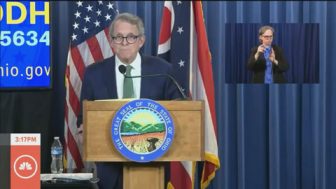 Instead, last week, the governor announced a “$300 million reduction in K-12 public-school funding, $210 million from Medicaid spending and $110 million from college and university funding.”[1] To my dismay, teachers, students, and the poorest Ohioans will bear the brunt of the budget cuts caused by the COVID-19 crisis.
Instead, last week, the governor announced a “$300 million reduction in K-12 public-school funding, $210 million from Medicaid spending and $110 million from college and university funding.”[1] To my dismay, teachers, students, and the poorest Ohioans will bear the brunt of the budget cuts caused by the COVID-19 crisis.
Interestingly, the Department of Corrections was spared from the budget ax, because “(prisons) have gotten to be more expensive to operate as state officials try to deal with COVID-19 outbreaks among prisoners and staff.”[2]
Aren’t schools going to become more expensive to operate as we try to deal with preventing outbreaks among students and staff? Schools are also a setting where a lot of people come in contact with each other in a relatively small space, which is why they were the first to be shut down when the dire nature of the situation became clear.
To return to school and keep our students and educators safe, nearly every aspect of the school day will need to be changed. Lunches, assemblies, large classes such as gym and choir, even one-on-one tutoring sessions will all have to be reconfigured. To achieve smaller class sizes, students might attend on alternate days or for half days. These modifications may require extra bussing, increased staffing, longer school operating hours, and at the very least, more daily cleaning and sanitizing. Furthermore, we need to be prepared to offer additional mental health services to help our students deal with the stress of returning to school or the trauma they endured while at home. Not knowing if or when something like this might happen again, we also need to ensure equal access to technology for all kids. And all of that equals MORE MONEY, not less.
Why not tap part of Ohio’s rainy-day fund? We are far beyond rain. We are past thunderstorms, tornadoes, and floods. We are close to “Sharknado” territory, and if that isn’t the time to use at least part of the rainy-day fund, when is? In actuality, we could use ALL of the rainy-day fund to avoid cuts in education and still have billions left over.
I know that OEA’s leadership agrees that we should tap into the rainy day fund. As Piet van Lier of Policy Matters Ohio noted “the state should have looked to the rainy-day fund now to help school funding, a move DeWine chose not to take,” and adding that “It’s just beyond comprehension that you could be doing that [cutting aid to schools] without turning over every stone.”[3]
Perhaps the cuts to school budgets made by the governor will be offset by the federal CARES (Coronavirus Aid, Relief, and Economic Security) Act. But the fact remains, if DeWine had not made the draconian cuts to education, any CARES money school districts receive could have actually been used to address the inequity issues and the need for creative solutions to resume in-person education, rather than to simply put local budgets on track to barely break even.
The governor likes to say we are “all in this together.” It doesn’t feel that way to me. It feels like educators, who have figured out how to completely change education in a matter of days, who are putting in more hours than ever before, who don’t even have time to say “we didn’t sign up for this,” are being taken advantage of. We’ve always stepped up, we’ve always figured out how to make do with the money we’re given, we’ve always done everything that has been asked of us and in such an outstanding manner that the governor has no reason not to expect that we won’t figure this out, too.
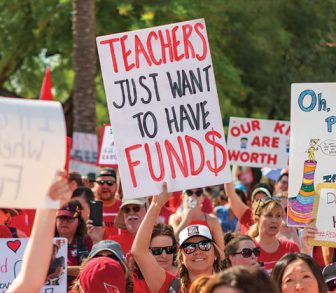 We simply have to stop settling for monetary leftovers. We have to fight to make Ohio’s children the priority they should have been all along. We can’t count on Betsy DeVos or the current occupant of the White House to provide federal dollars to help the nation’s schools meet the new challenges we face. We can’t simply rely on union leaders or education-friendly state legislators to advocate for us and for our students. WE must fight for funding to address the new needs of our schools. WE must fight for safe conditions for us and our students to return to. WE must fight for equal access to technology for all kids.
We simply have to stop settling for monetary leftovers. We have to fight to make Ohio’s children the priority they should have been all along. We can’t count on Betsy DeVos or the current occupant of the White House to provide federal dollars to help the nation’s schools meet the new challenges we face. We can’t simply rely on union leaders or education-friendly state legislators to advocate for us and for our students. WE must fight for funding to address the new needs of our schools. WE must fight for safe conditions for us and our students to return to. WE must fight for equal access to technology for all kids.
We must let the governor and our elected representatives in Ohio and Washington DC know that we are willing to step up to the challenge that the COVID virus has brought to education, as we have demonstrated in stellar fashion during remote learning, but we need financial help to do so.
It is time to go on the offensive.
There are nearly 140,000 educators in Ohio[4]; imagine the power of some 140,000 people advocating for proper funding to take care of the needs of our students. We teach our students to stand up for what they believe in; are we doing that ourselves?
It’s worth contacting our U.S. Representatives and Senators to ask them to fight for funding from Congress. We have an even better chance of developing relationships with our state representatives and senators. A hand-written letter speaks volumes. An email also works and will allow you to quickly reach all of your legislators. Put your legislators’ office phone numbers in the Favorites on your phone so you can call them easily and frequently. Donate to the FCPE fund so that we can continue to elect legislators who support public education.
We need to make sure our leaders are hearing from educational experts. They might not seek out our opinion, but we must give it to them anyway, and hope that they have the good sense to listen to us when making decisions that impact education in Ohio.
The old cliche says that teachers shape the future. That has never been more true than now. It pains my heart to say it, but education may never be the same. We may never go back to “normal.” We have to prepare for that reality, and that means becoming teachers who advocate and argue for the funding we need to make the changes that will indeed shape the future of public education in a post-COVID 19 world.
— Julie Holderbaum is an English Instructor and an Academic Challenge Advisor at Minerva High School, Minerva, Ohio.
[1] “Ohio Gov. Mike DeWine announces $775m in state budget ….” 5 May. 2020, https://www.cleveland.com/open/2020/05/ohio-gov-mike-dewine-announces-775m-in-state-budget-cuts-to-education-medicaid-and-more.html. Accessed 6 May. 2020.
[2] “Ohio Gov. Mike DeWine announces $775m in state budget ….” 5 May. 2020, https://www.cleveland.com/open/2020/05/ohio-gov-mike-dewine-announces-775m-in-state-budget-cuts-to-education-medicaid-and-more.html. Accessed 6 May. 2020.
[3] “Coronavirus economic fallout ‘terrifies’ school leaders, experts ….” 8 May. 2020, https://www.cleveland.com/coronavirus/2020/05/coronavirus-economic-fallout-terrifies-school-leaders-experts-stirring-fears-of-deep-budget-cuts-merged-districts.html. Accessed 11 May. 2020.
[4] “Facts and Figures | Ohio Department of Education.” 11 Feb. 2020, http://education.ohio.gov/Media/Facts-and-Figures. Accessed 11 May. 2020.
Taking Comfort in What We Know: Surviving as a Type A Teacher in Times of Uncertainty
By Julie Holderbaum, Minerva EA/OEA
 A week ago, I was trying to figure out how to rearrange my lesson plans to accommodate my trip to the State House on Wednesday to rally in support of public education.
A week ago, I was trying to figure out how to rearrange my lesson plans to accommodate my trip to the State House on Wednesday to rally in support of public education.
Today I’m in my empty classroom, trying to plan how to teach remotely for the foreseeable future.
Last week, it was important to me to teach the classics. It was important to me that I checked every box in the common core standards. It was important to me that my students did well on their Student Learning Objectives (SLO) so my evaluation would show that I’m a good teacher. It was important to prepare for state testing.
What seemed so imperative last week seems so insignificant today.
Still, while I’ve regained some perspective, I struggle. I’m a Type A teacher who thrives on planning. It’s difficult to plan when there are so many questions and so few answers. I can’t help but feel truly overwhelmed.
I have to take comfort in what we do know, and today, there are five things that I know with absolute certainty.
The world has not stopped. The sun will rise every day. The spring flowers will still grow. My trees will still blossom. There will be worms when it rains and that delicious smell of spring in the air. There will be rainbows.
This is temporary. While we do not know exactly when our classrooms will be filled with students, we know that there will come a day when our routines will go back to normal. Remote learning and teaching are not going to last forever. Someday we will once again stress over SLOs and state testing and jammed copiers and spotty wifi. Someday we will once again all be together under the Friday night lights cheering for our football team. The stormy waters we are being tossed about in will settle down.
This is an opportunity. It’s an opportunity for us to teach what really matters in our curriculum without worrying so much about the common core standards. I’m teaching my favorite poems and short stories and essays and I’m not worrying about whether or not they fit in with where we were in my prescribed and detailed and time-tested curriculum when we went on break. Not every content area lends itself to that freedom as much as English does, but surely in any grade and any subject, we can use this as an opportunity to teach the lessons and skills we are truly excited about, and we can get creative with this freedom.

People need human connections. I’ve never wanted to be with strangers at a concert or a movie theater more in my entire life. I’ve never wanted to hug my friends and co-workers as much as I do right now. I hope that when this is over, we will remember not to take for granted the pleasure that comes from human contact, from being in the same place at the same time, whether we are high-fiving strangers at Ohio Stadium after a Buckeye touchdown or raising voices and signs on the steps of the State House, advocating for our profession.
Our kids need us. They need us to maintain those human connections with them, because for many of them, school was the one place they felt safe and cared for.
They need us to show them how to persevere through challenging times, how to be flexible, how to keep a positive attitude. They need us to let them know that we are still here, that we still care, and that they are not alone.
So, in focusing on these five things I know, I hope to take action in ways that keep me from feeling too anxious in this time of uncertainty.
I will spend time outside, sun on my face, watching the progress of my tulips and letting my dog pull me along on a walk.
I will use this time to re-evaluate my teaching practice. This forced flexibility has made me realize that I’ve become too locked in to what I teach and how I teach it. I’m now able to search for new lesson ideas online and to try out the plethora of educational websites I’ve just never had time to explore. Most importantly, I am going to rethink whether spending so much time on the “classics” from the past (Paine, Poe, Emerson, Twain) is worth it when it means I never get time to teach more recent authors (Angelou, Atwood, Lamott, Allende). Someday we will be back in our classrooms with kids, but how I spend those days and what we study may not look the same at all.
I will do everything in my power to keep those human connections with my students, for my sake as well as theirs. I’m going to call and email and Remind and Google Classroom and Flipgrid until those teenagers I love are completely annoyed, but they will know I care and that is what matters.
 We know that academic and social development happens best in a school setting when students are engaging with their peers and teachers, and we just cannot provide that to them right now. But in the meantime, no one is better at meeting unexpected challenges than educators. Education has been derailed by state mandates in recent years, but this is a chance to get back to what it’s really all about, what it should always be about: the kids and their wellbeing. We didn’t go into teaching to provide politicians with data to determine if we have good schools or not. We went into teaching because we care about kids. If we keep that in mind, remote learning won’t feel so remote.
We know that academic and social development happens best in a school setting when students are engaging with their peers and teachers, and we just cannot provide that to them right now. But in the meantime, no one is better at meeting unexpected challenges than educators. Education has been derailed by state mandates in recent years, but this is a chance to get back to what it’s really all about, what it should always be about: the kids and their wellbeing. We didn’t go into teaching to provide politicians with data to determine if we have good schools or not. We went into teaching because we care about kids. If we keep that in mind, remote learning won’t feel so remote.
Maybe my students won’t get the exact same lessons they would have if we weren’t in this situation, but I have to be okay with that. I suspect that the lessons we all learn during this unplanned hiatus might be the kind that mean far more and last much longer than anything a perfectly planned unit can teach anyway.
— Julie Holderbaum is an English Instructor and an Academic Challenge Advisor at Minerva High School, Minerva, Ohio.
Why Ohio’s Report Card System Is Failing to Make the Grade
By Julie Holderbaum, Minerva EA/OEA
Ohio’s taxpayers want our schools to produce flourishing young adults who will contribute in meaningful and healthy ways to our society, and they spend a lot of money to ensure that this happens. It makes sense, therefore, that schools are required to undergo a yearly check-up and share the results with our communities.
 However, the current report card system is doing more to harm schools than to support them.
However, the current report card system is doing more to harm schools than to support them.
Any teacher or parent can tell you that a letter grade does not represent the entire child. A student can be quite intelligent, but if that child doesn’t turn in assignments on time, his grade will reflect not only his academic ability but his lack of responsibility. And that’s just classroom work; we all know that a child is more than classroom work. For example, a colleague of mine recently told me he saw my daughter comforting a friend in the hallway who was “freaking out” about a test her friend felt unprepared for. Jamie told me the story later of how she got her friend to take deep breaths and even laugh before going back to class. Frankly, I am prouder of that than any of the A’s on her report card.
Just as a student’s report card grades cannot show every aspect of awesome that lives in him, a school district report card cannot show all the beautiful and amazing moments that happen in our schools.
For example, the students in my small town’s elementary school have raised $95,000 for St. Jude’s over the last 12 years. Our middle school’s student council visits the local nursing homes and helps with the local food pantry once a month. Our high school seniors, twice per year, go into our community to rake leaves and plant flowers for the elderly, paint pavilions at the park, and more.
None of this shows up on our school district’s report card.
If I were choosing a new school district for my daughter, I would want to know what kind of opportunities are provided to teach children how to be good humans, not just good students.
I would want to know what kind of relationship the schools have with the community.
I would want to know not only what academic opportunities exist, but also what extra-curricular options are available.
I would want to know not only what academic support is provided for kids, but also what emotional support is in place to help children who live with poverty and trauma.
Our current report card system makes none of that information available to parents or community members. It is impossible to get a full picture of what wonderful things are happening in our schools.
Not only that, but the current system has damaged schools by basing many of the letter grades on testing, which has led to the loss of creative and playful activities in our classrooms and an increased and unhealthy focus on standardized tests. Tests are an easy factor to include on the report cards because they are a concrete measure, seemingly, of how a school is doing. What goes unmeasured is the stress the tests place on teachers and on students.
The current system even ties our hands when we try to do what is best for students regarding testing.
 My high school recently considered giving the ELA II test to our 9th graders, in order to give struggling students more opportunities to pass the test and to give those who pass during their freshman year fewer tests to take as 10th graders. However, once we realized that those students who passed their freshman year could potentially count as zeroes on our performance index their sophomore year, we decided not to go forward. We could not risk a possible F in the performance index area of the report card.
My high school recently considered giving the ELA II test to our 9th graders, in order to give struggling students more opportunities to pass the test and to give those who pass during their freshman year fewer tests to take as 10th graders. However, once we realized that those students who passed their freshman year could potentially count as zeroes on our performance index their sophomore year, we decided not to go forward. We could not risk a possible F in the performance index area of the report card.
Under the current system, any school building earning a D or an F in a report card indicator becomes eligible for EdChoice vouchers. Essentially, taxpayer money is pulled from a local public school and given in the form of a voucher to any private school a student wishes to attend instead. Thanks to the report card system, nearly ⅔ of Ohio’s school districts would be eligible for the vouchers in the 2020-21 school year. Consequently, the legislature was recently in crisis mode trying to address the problem before the February 1st deadline to apply for vouchers. Instead of solving the problem, however, they extended the deadline and bought themselves some time. This entire debacle could have been avoided if Ohio used an informative and fair evaluation system for its schools instead of a punitive one.
Furthermore, due to “failing” grades, three school districts in Ohio have now been taken over by the state. Many other districts are in danger of falling prey to HB 70, which allows local decisions by the school board to be over-ridden by an appointed (and well-paid) CEO. This is yet another harmful and unfair repercussion of the report card system.
Fortunately, widespread bipartisan support to change the way schools show accountability to their communities is gaining momentum in the Ohio legislature, perhaps because of the plethora of problems the report cards have caused.
 No reporting system will truly show all of the greatness happening in our schools, such as the money our students raise for cancer patients or the small moments of kindness in a hallway. However, OEA has crafted a plan that would include a myriad of indicators beyond test scores and graduation rates. “Report cards” and A-F grades would be gone. Instead, a fuller picture of what is happening in our schools would be available in School Profiles. Mandated information such as test scores and graduation rates would still be included, but so would information about early childhood education, AP/Honors courses offered, whole-child classes available (art, music, world languages, health/wellness), ratio of guidance counselors to students, average class size, and more.
No reporting system will truly show all of the greatness happening in our schools, such as the money our students raise for cancer patients or the small moments of kindness in a hallway. However, OEA has crafted a plan that would include a myriad of indicators beyond test scores and graduation rates. “Report cards” and A-F grades would be gone. Instead, a fuller picture of what is happening in our schools would be available in School Profiles. Mandated information such as test scores and graduation rates would still be included, but so would information about early childhood education, AP/Honors courses offered, whole-child classes available (art, music, world languages, health/wellness), ratio of guidance counselors to students, average class size, and more.
Ohio’s schools are more than a letter grade on a report card. We are not afraid of accountability. We are eager to show what we are accomplishing in spite of the many challenges we face. We only ask for a chance to show a more complete picture of what happens in our schools every day.
— Julie Holderbaum is an English Instructor and an Academic Challenge Advisor at Minerva High School, Minerva, Ohio.
President’s Message: Support, Protection, Power
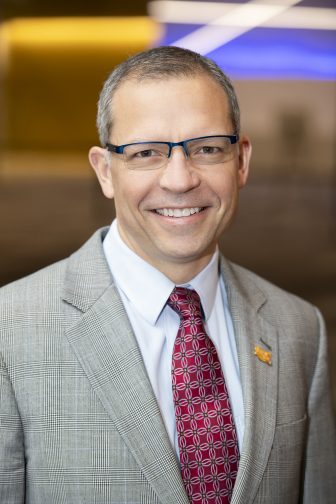
Our Union Helps Us Make Our Students’ Lives Better And Our Communities Stronger
I can’t begin to tell you how much of an honor it is to have the opportunity to serve as your president.
OEA is an incredible organization for two fundamental reasons: who we are, and why we’re here. We have caring, committed, qualified educators in all 88 of Ohio’s counties performing in a wide variety of roles who are united in a single cause—to ensure that every single one of our students is provided a quality public education that inspires their natural curiosity, imagination and desire to learn.
Driven by the desire to foster the critical thinking, problem-solving and decision-making skills my students needed to become effective citizens in our democracy, I became a high school social studies teacher 28 years ago. I didn’t go into education to help kids pass tests, but to create lifelong learners.
I wanted to make a difference, and I know you do too. That’s our purpose. That’s our mission.
That’s why I believe in you and your power to change lives and shape the future. My desire to make a difference naturally led to my active involvement in my local union.
I knew even before my first day of teaching American history at Tolles Technical Center in Plain City I would need the support of my colleagues if I had any hope of success.
That’s why I proudly joined the 45-member strong Tolles Education Association and soon found myself attending Labor- Management Committee meetings and advocating at the bargaining table.
As I continued my career in Worthington and through nearly three decades of activism at all levels of this organization, I have learned that it is only through our union that members are given the support and relationships to necessary to nurture our work with students. It is only through our union that we have the protection and advocacy needed to do our jobs without having to look over our shoulders. And it is only through our union that we are able to harness our collective influence and power to protect public education and improve the lives of our fellow educators and the students we serve.
“I wanted to make a difference, and I know you do too. That’s our purpose. That’s our mission.”
Many colleagues have supported and encouraged me throughout my union journey.
Wendy Nichols, my teaching mentor at Tolles, first invited me to belong to the association and provided me with opportunities to get involved in my local. Kathy Broom, who had been fired early in her marriage and teaching career simply for being pregnant and used the power of her union to successfully win her job back, helped me understand the power of collective advocacy. Suzanne Kaszar, my first OEA Labor Relations Consultant, taught me about bargaining and connected
me to programs to develop my leadership skills.
So many others have made a difference for me because they recognized my leadership potential and provided opportunities for me to play an active role in servingmy fellow members. It began with a simple invitation to belong to a movement that was larger than myself.
If you’re new to your role as an educator or education support professional, or if you have been in the profession for a while but have not yet become a member, I invite you to belong to the OEA and to tap into the support, protection and power your union has to offer.
If you’re returning as a member, I encourage you to be actively involved. Consider following the example Wendy provided to me and invite at least one colleague to join you and feel included. We’re all in this together.
I’m inspired by you and all that you do every day to make our students’ lives better and our communities stronger. You have challenged, nurtured and supported me throughout my union journey, and I look forward to continuing our journey together.
Sincerely,
![]()
Scott W. DiMauro, President
Ohio Education Association
Dear So-called Average Teacher

By Julie Holderbaum, Minerva EA/OEA
Now that summer is here and you have time to breathe and reflect on the school year that just ended, maybe you’re feeling that your year was just, well, average.
If each year of your career is a song on an album, there are a number of reasons why this past school year isn’t going to make it to your greatest hits compilation.
Maybe you had a challenging schedule, a new prep or a new grade level. Perhaps you had a group of kids who didn’t work well together, or who were less academically capable than previous groups.
Maybe you had to learn how to work with a new colleague very closely, which even in the best of circumstances is a stressor. Maybe you lost your best teaching buddy to another school or district, the one whose room you could walk into, shut the door, and say, “You won’t believe the day I had” and vent your frustrations with no worry of judgement.
Maybe there was an administration change in your building that didn’t go smoothly.
Maybe your students confided in you more than usual and you know who has probation officers, pregnant girlfriends, and neglectful or abusive home situations. You know who is having sex and who is drinking on the weekends and who is bouncing from one friend’s couch to the next since there is nowhere else to live. Frankly, what you know about your kids’ personal lives is a heavy burden that weighs on you at school and does not dissipate just because you walk through your own front door at the end of the day. In fact, it gets heavier when you look around at your healthy family and your safe, comfortable home and your belongings that would be luxuries to so many of your students.
“Stress is stress and it doesn’t always stop and start as we move between home and school.”
Perhaps you had a particularly stressful personal year. You went through a breakup, or your child started driving or dating, or everything that could break in your house, broke. Maybe a loved one passed away unexpectedly, or maybe you watched someone you love die a slow death, and even though you had time to say goodbye, it still hurts deeply. Either way, grief can wash over you like a tidal wave, soaking every part of your life, even when you’re at school. Personal stress affects who we are in and out of the classroom, and professional stress impacts our personal lives as well. Stress is stress and it doesn’t always stop and start as we move between home and school.
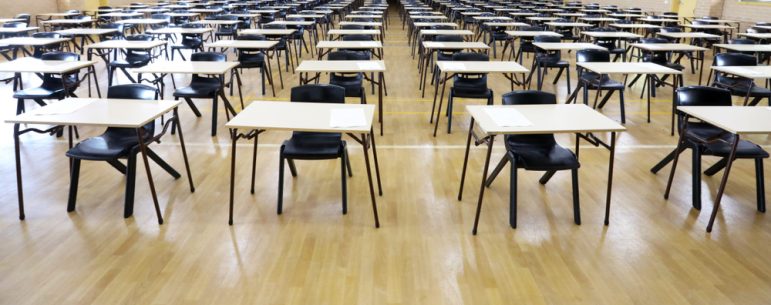 Maybe you feel like you didn’t do enough to support your profession this year.
Maybe you feel like you didn’t do enough to support your profession this year.
You didn’t rally at the statehouse, you didn’t email or call one single legislator, and you didn’t go to union meetings.
Social media alone bombards you with reasons to do all of those things, especially in Ohio, and it can be completely overwhelming to try to keep up with all the reasons we have to be activists, let alone make time to take action.
And then maybe you looked around and saw teachers who can do it all.
Nothing average about them, not this year or any year.
They advocate fiercely and ceaselessly for public education, create new ways to teach old material that inspires students and garners positive attention from administrators, and they balance work and school stress with aplomb. They have boundless energy, unlimited ideas for positively impacting kids and schools, and good days far more often than bad. They reap the rewards of their efforts with outstanding test scores and any number of teacher awards or honors. They are resilient and resourceful and recognized, and THEY ARE CHANGING THE WORLD while you are just trying to get through the day and the faculty meeting at the end of it.
Listen. Those teachers don’t exist. Some people fake it better than others, but we all have work stress that weighs on us, problems that can’t be solved with a new lesson plan. We all have personal lives that involve some broken hearts and broken appliances. We all recognize the value of the work of the OEA to help teachers advocate for our students and our working conditions, but we can’t be Norma Rae standing on a table holding high a sign that says UNION every day. After all, it’s hard to teach while holding a sign and standing on a table.
True, it’s important to strive toward professional success and to have compassion for our students, even if their stories weigh on us. It’s important to have rich personal lives, even if they are, at times, painful. It’s important to fight for public education, even though the battles can be exhausting.
But it’s equally important to recognize that no one can excel at every part of life for any extended period of time. For various reasons, we have years that are simply average, probably more often than not. You know why there are movies about Erin Gruwell (Freedom Writers) and LouAnne Johnson (Dangerous Minds). Because teachers like that, as wonderful as they are, are anomalies. Most of us never reach those heights and no one expects us to.
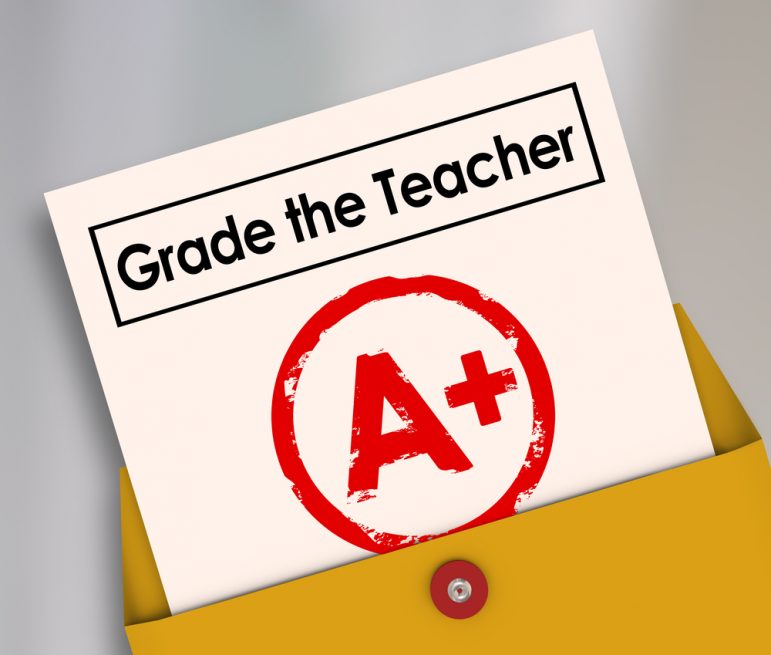 Dave Stuart Jr., in his excellent book These Six Things, articulates this concept so well: “We are never finished becoming the teachers we hoped we’d be when we first set out.”[1]
Dave Stuart Jr., in his excellent book These Six Things, articulates this concept so well: “We are never finished becoming the teachers we hoped we’d be when we first set out.”[1]
The key is in the phrase “never finished”. Maybe you had an average year, for whatever reason. But think back to your first years of teaching. Are you better now than you were then? Most likely you are. There is no guarantee that we will one day be adorned with accolades and gold medals for teaching greatness. However, if we continue to strive to have a positive impact on the kids who walk into our classrooms every year, I think we are doing the job right.
We don’t always see, in immediate hindsight, the seeds that we have planted and the impact that we have had. During your “average” year, you may have unknowingly made one comment that turned around a student’s perspective on your subject area or even on his life.
I am admittedly biased, but I think a teacher who does an “average” job is still doing superhuman work that most people outside of education could not handle for a week, and even our average work can have a significant positive outcome on someone’s life.
When I became an educator, my high school government teacher told me that one of the blessings of teaching is that there are so many starts and stops. In no other profession are there so many built-in chances to begin again, whether it’s after a long weekend or at the dawn of a new school year.
So enjoy this momentary stop. Take a well-deserved rest. Appreciate the time to reset and rejuvenate. Reflect on the year that ended but look forward with hope to the year that is coming and the opportunity to continue working to be the teacher you set out to be when you first started. And then, in a few months, begin again.
[1] “These 6 Things – Dave Stuart Jr..” https://davestuartjr.com/these-6-things-how-to-focus-your-teaching-on-what-matters-most/. Accessed 13 Jun. 2019.
— Julie Holderbaum is an English Instructor and an Academic Challenge Advisor at Minerva High School, Minerva, Ohio.
Blog: The Antidote to Despair
By Julie Rine is an English Instructor and an Academic Challenge Advisor at Minerva High School, Minerva, Ohio.
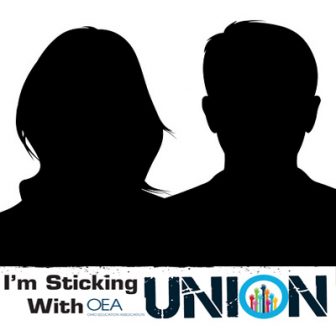 It’s easy to feel hopeless and overwhelmed right now, isn’t it? The Supreme Court’s decision regarding the Janus case, while not unexpected, still stung. The move by the Court has the potential to weaken unions, many sources say, and the decision has even been referred to as a “crippling blow” .
It’s easy to feel hopeless and overwhelmed right now, isn’t it? The Supreme Court’s decision regarding the Janus case, while not unexpected, still stung. The move by the Court has the potential to weaken unions, many sources say, and the decision has even been referred to as a “crippling blow” .
There are certain unfortunate situations in life that we can’t control, and it’s important to recognize those and let them go rather than devote energy to a state of affairs that cannot be changed.
There are also situations in life that we CAN impact, with our actions, our words, our advocacy, but even in those situations, there are moments when you have to let go, politically, personally, emotionally. You have to take a break, look away, check out, turn off the news and turn on a Friends rerun, lose yourself in a good book, take a few deep breaths and decide to let go and let someone else take up the cause for awhile. Those “let go” moments are critical to maintaining good mental health and restoring energy to jump back into the fray when we are refreshed and ready to go.
But this is not one of those times. This is not a “let go” moment. This is a “Let’s Go” moment.
The media would have you believe that the Janus ruling will lead to fewer union members which means a reduction in funds which equals unions cutting jobs and services and benefits. If you believe the news, soon our teacher unions will be so weak and ineffective that teachers will not be able to influence an impressionable kindergartner, let alone legislative policies.
Don’t believe the hype.
If anyone is equipped to turn a bad roll of the dice into an opportunity to change the game, it’s teachers.
On a daily and weekly basis, we think on our feet, we adapt to a snag in the routine. We reflect on what worked and what didn’t and make adjustments in the three minutes between classes, a task that would take Congress three months. We take on whatever challenges exist in our communities and in our classrooms and we overcome them. We don’t stop there, either. Most of the time, we not only overcome the challenges we face, challenges which can change from year to year and week to week, (sometimes even minute to minute!), we create new programs, new methods, and new realities that are often more effective for our students than what existed before the obstacle presented itself.
I don’t care what your political leanings are, if you are a teacher, you rival only parents in your fierce desire to protect kids and prepare them to succeed in the future.
The union helps us do just that. Through the union, we can fight for what our kids need to succeed, such as smaller class sizes, adequate and up-to-date academic resources, onsite counselors and mental health professionals, and a safe environment in which to learn. The union also helps us fight for what teachers need to help students succeed, such as adequate planning time, meaningful professional development, continued opportunities for further education and training, sufficient time to work as teams to tackle problems rather than as isolated instructors behind our classroom doors, and yes, a fair salary which allows us to focus fully on our students and our own families instead of squeezing in hours away from both while we work a second job to make ends meet. The trickle-down effect here is obvious; when teachers lack support and resources, kids lose the effective education they deserve.
So what can we do?
The decision will not be reversed, and even worse, it appears that a new Justice will be seated who may have equally damaging views of unions and public education.
First, we must remember that Supreme Court Justices are not the only ones allowed to issue opinions. We can write letters to the editor of our local papers, and we can routinely call or write our elected officials to make our voices heard and our opinions known.
Secondly, we can actively recruit members, especially young teachers, to not only join the union, but to become active in the union. Retaining or gaining members will of course help the union financially, since our dues dollars provide us with the resources and training necessary to be effective advocates for our students. But we don’t just need the dues money. We need active and energetic members, more than ever before. Money talks, but members act.
Thirdly, we can help register new voters. If we want a future in which citizens are active participants in the democratic process (whether they are on “our side” or not), then we must emphasize the importance and value of our right to vote, and then take the practical step to register young voters. It is a simple process. There is no reason why every 18-year-old student who graduates from an American high school should not be registered to vote.
 We can’t force them to register, however, so the goal should be to get them excited to register.
We can’t force them to register, however, so the goal should be to get them excited to register.
By teaching our students how to read a variety of sources on any given topic and then to form their own opinion, we help them become critical thinkers. Critical thinkers are often eager to make their positions known, and the most powerful way to do that is to exercise the right to vote. Few moments of my teaching career have been as special to me as when I registered a student to vote and she literally high-fived me and yelled, “I can vote, I can vote!” This is the enthusiasm we must seek to engender in our classrooms.
Perhaps most importantly, we can get involved in local and OEA efforts to elect pro-public education and pro-union candidates. We can work phone banks, canvass door-to-door, talk to our colleagues and friends about why we support certain candidates. We must follow that up by voting for candidates who support us as public school teachers and as union members, up and down the ballot, in local elections, in primaries, in midterms and in presidential elections. These actions are particularly important in Ohio this year, as we will be voting for a senator and a governor.
Political defeats can be discouraging, but nothing feels worse than knowing you could have done more to ensure victory when instead you chose to sit on the sidelines. We must take our frustration and allow it to motivate us to take action.
Sure, the Supreme Court decision is a setback, a challenge to be overcome. But a “blow” to unions? I don’t think so. In fact, I think they might have just poked the beast. Joan Baez said “Action is the only antidote to despair.” So don’t despair. Don’t make this a “let go” moment. This is a “LET’S GO!” moment and I have no doubt that we will persevere and succeed. The teachers’ unions are strong because teachers are strong, and we are stronger when we stand together, as friends, as colleagues, and as proud union members.
![]()
— Julie Rine is an English Instructor and an Academic Challenge Advisor at Minerva High School, Minerva, Ohio.
#ABConduct Tip Sheets
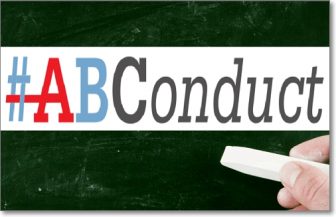 The Ohio Department of Education and Ohio Education Association has a series of career tips on how to recognize as well as address ethical dilemmas.
The Ohio Department of Education and Ohio Education Association has a series of career tips on how to recognize as well as address ethical dilemmas.
The initiative is supported by the Buckeye Association of School Administrators (BASA), Ohio Association of Secondary School Administrators (OASSA), Ohio Association of Elementary School Administrators (OAESA), and the Ohio Federation of Teachers (OFTA).
- #ABConduct Tip 1 | Be Smarter Than Your Smart Phone
- #ABConduct Tip 2 | When a Good Coach Goes Afoul
For more information about #ABConduct contact, the Ohio Department of Education Office for Professional Conduct at 614-466-5638 or visit education.ohio.gov/ABConduct.
![]()
 Oh Yes, We’re Social — Join the Conversation!
Oh Yes, We’re Social — Join the Conversation!
![]()
You Cannot Silence the Voice of Working People
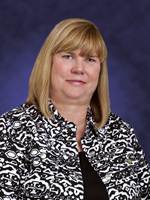
Teaching children is pretty wonderful.
This has been my passion and in the 19 years that I taught, I learned from and have been inspired by my colleagues. I have also been moved by the actions of fellow union members who fought for better wages and safe working conditions.
The energy we are seeing with teachers standing up in the neighboring states of West Virginia and Kentucky and elsewhere as the #RedForEd movement spreads across the country is unparalleled in recent history. Public opinion is with us. A recent poll found that 62% of Americans believe the country is better off with stronger unions.
Yet, while this happening, amid the highest level of support for unions in 15 years, the US Supreme Court in a narrow 5-4, politically-motivated decision ruled that unions – specifically public employee unions — should be weaker. The Supreme Court ruled in the case of Janus v. AFSCME, Council 31 to further tilt the playing field in favor of the wealthy and corporate interests.
The court overturned 40 years of precedent in deciding that requiring so-called fair-share fees to be paid by people who choose not to join a public-sector union but who enjoy the benefits of union representation somehow violates the First Amendment of the Constitution. This doesn’t make sense, and it’s not right.
It also doesn’t make sense that so many people are finding it difficult to get by and provide for their families, no matter how hard they work. It doesn’t make sense that people are more productive than ever, but they’re working longer hours for less money and fewer benefits. And it doesn’t make sense that all this is going on while a handful of very wealthy people have seen their salaries and holdings skyrocket. It is shameful that the wealthy special interests behind the Janus case have succeeded in manipulating the highest court in the land to do their bidding.
"I believe deeply in the power of our collective voice to make sure that every teacher and student has the resources they need to be successful."
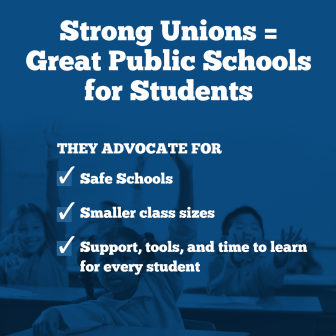
I believe deeply in the power of our collective voice to make sure that every teacher and student has the resources they need to be successful. When unions negotiate for working conditions in the classroom, they also negotiate for the conditions in which our children learn. When our unions advocate for us as educators, they also advocate for the students we serve.
Public service workers-teachers, social workers, firefighters, and nurses are more determined than ever to stick together in their unions. Unions remain the most effective vehicle for the power in numbers needed for working people to secure their rights and freedoms, and they provide a pathway to the middle class.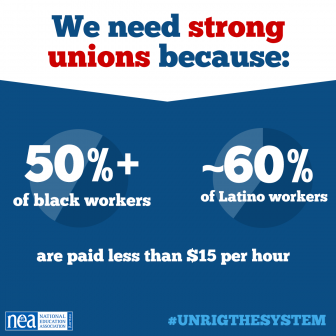
The truth is, when unions are strong, the entire community benefits. Unions use their collective voice to advocate for policies that help all working people — like increases to the minimum wage, affordable health care and great public schools.
Unions help close the pay gap for women and communities of color who have been systematically disadvantaged due to discrimination and prejudice.
African-American women in unions earn an average of $21.90 per hour, while non-union women earn $17.04. When Latinos are members of a union, their median weekly income increases by more than 38 percent.
The wealthy special interests that have benefited from an unfair, unbalanced playing field are now intent on tilting that playing field even more by attacking public-sector unions.
It’s driven by ideological extremists who oppose our basic right to organize. And it’s an attack on more than the men and women who are teachers and custodians and first responders; it’s an attack on anyone who wants to use their voice to fight for something better for their communities.
I have dedicated my life both to helping students and fighting for my community and I won’t back down.
My fellow educators and I are going to continue to speak out and I ask those who feel the same, please join us. Because no great social change — from ending slavery to securing the right to vote for every citizen, to winning the freedom to organize — has been achieved by standing alone.

Becky Higgins
President
Ohio Education Association
Categories
2018 Press ReleasesAbout Voices of Change
Education Support Professional
Higher Education Faculty
Higher Education Staff
Legislative Issues and Political Action
Local Leader
Member Stories
Membership
New Teacher
Non-educator
OEA Member
preK-12 Teacher
Retired Member
Student Member
What's New
Stand Strong for Public Education…Together, We Can!
 Janus v. AFSCME?
Janus v. AFSCME?
Through our union, we advocate for what our students deserve and for what educators need to do our jobs well. However, the U.S. Supreme Court will likely issue a decision in the case this week that could threaten our collective voice. Janus v. AFSCME is a politically motivated attack to use the U.S. Supreme Court to divide and conquer our union by eliminating the fair share fee.
Why Does It Matter
Janus v. AFSCME is part of a concerted effort to weaken our ability to advocate for our students and members. Negotiating collectively improves the lives of all working people—even those who are not union members themselves—because strong unions set pay and benefit standards that non-union employers follow. This means stronger communities. At its core, the Janus case is about working people’s freedom to make a better life for themselves, their families, and their communities.
What Are We Doing About It?
Together, we are continuing the fight for strong public schools by strengthening our locals and demonstrating value and relevance to our members. | #OEAstrong
Download the Strong OEA = Strong Public Schools fact card for additional details about Janus v. AFSCME.
![]()
 Oh Yes, We’re Social — Join the Conversation!
Oh Yes, We’re Social — Join the Conversation!
![]()
Updated June 4, 2018
Ohio Education Association Endorses Cordray for Governor
The Ohio Education Association (OEA) Fund for Children and Public Education (FCPE) has unanimously endorsed Richard Cordray (D) for Governor of Ohio. The vote was taken at an FCPE convention on Saturday, May 19, 2018, in Columbus.
“Richard Cordray displayed an impressive understanding of the key issues that Ohio’s next Governor will face – from the need to invest more in the state’s public schools and less in poor-performing charter schools. He also understands the need to halt the over-reliance on standardized tests to measure student growth and to evaluate teacher performance,” said OEA President Becky Higgins. “He inspired our members with his commitment to make public education a top priority and to enhance universal pre-K programs that will set Ohio’s children on the path to success.”
The OEA FCPE State Council, comprised of elected OEA members from throughout Ohio carefully screens candidates based on their voting records, their stated support of public education and the OEA’s priority issues. The Republican candidate for Governor, Attorney General Mike DeWine, was invited to participate but declined to attend.
“We believe Richard Cordray has the leadership skills to address the many challenges the state will face in the years ahead,” said Higgins. “Educators, students, parents and all Ohioans will be well-served by his election.”
The Ohio Education Association represents 125,000 teachers, faculty members and support professionals in Ohio’s public schools, colleges, and universities.


